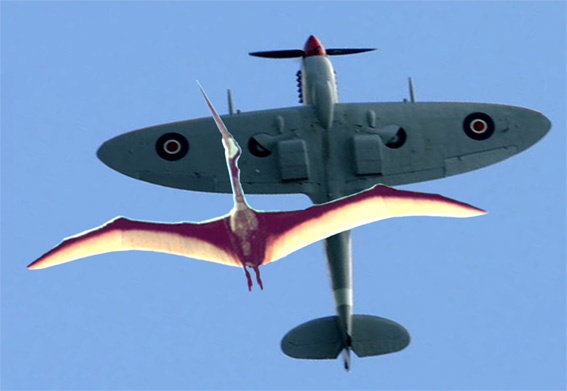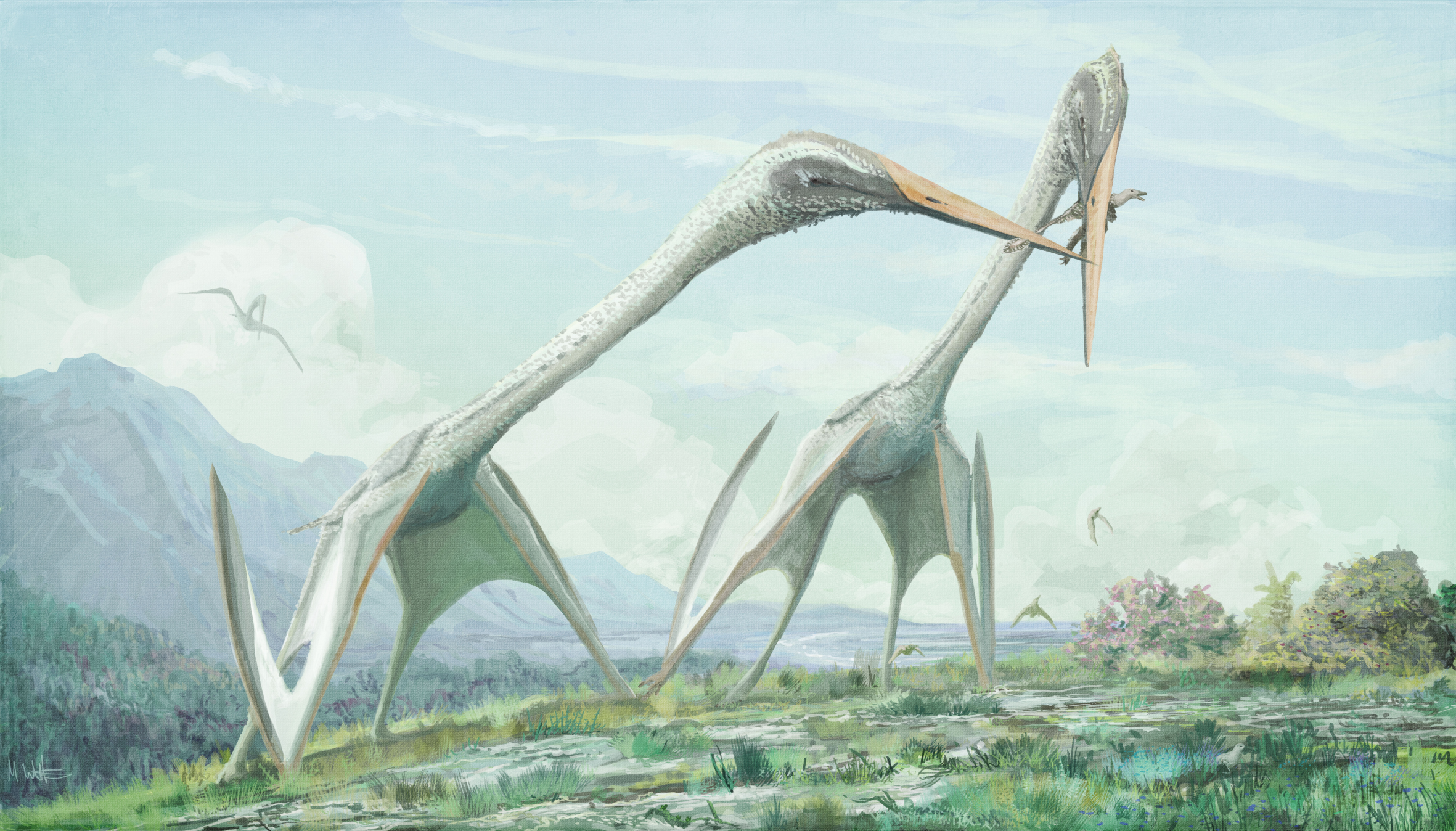
The problem, Hone said, was that for a long time it was never properly described, making it impossible for others to confirm whether other fossils were the same or different. The most well-known among them is Quetzalcoatlus, first named from fossils in Texas in the 1970s. The new species belongs to a group of huge pterosaurs called Azhdarchids that had large legs and feet, and lived inland. Cryodrakon probably preyed on lizards, small mammals and perhaps even baby dinosaurs. The new pterosaur lived about 77 million years ago, during the Cretaceous period, when Dinosaur Provincial Park was the swampy, subtropical home to dinosaurs like Albertasaurus and Chasmosaurus. He said that in addition to flying, they would have walked and run on all fours, likely with a giraffe-like gait that moves both legs on one side at the same time to avoid tripping. "These things have great, big long necks as well," said Hone. In 1944, in New Guinea (now the nation of Papua New Guinea), Duane Hodgkinson and his army buddy saw a 'pterodactyl' with a wingspan similar to a Piper Tri-P.


In this illustration, a giraffe is compared to Cryodrakon's similar-sized relatives Arambourgiania philadelphiae, middle, Hatzegopteryx thambema, right, and a human. That's longer than the 11-metre wingspan of a Cessna Skyhawk four-seater plane.Ĭryodrakon belonged to a group of giant pterosaurs called Azhdarchids. It's not much smaller than the largest pterosaur ever found, excavated in Germany, which had a wingspan of about 12 metres. We modelled hatchling pterosaur masses using a relationship predicted between pterosaur wingspan and body mass (44 R 2 0.983). The wingspan of a pterodactyl could range from 6.5 to 36 feet. When they did walk, they waddled on their hind limbs or legs and used their long wings for balance. Historical Period: Late Jurassic (150-144 million years ago) Size and Weight: Wingspan of three feet and two to 10 pounds. Habitat: Shores of Europe and South Africa. The Pterodactyl’s back legs were not as helpful to them as their wings. Name: Pterodactylus (Greek for 'wing finger') pronounced TEH-roe-DACK-till-us sometimes called pterodactyl. The study describes an animal that would have been about as tall as a giraffe, with similarly long legs on a short body, a mass of up to around 250 kilograms and wings that stretched about 10 metres from tip to tip. The Pterodactyl had a long beak, short hind legs, and a short tail. "It's a beautiful, stark landscape in winter, but dear God it's cold and snowy," Hone told CBC News. Those trips, did, however, help inspire his name for the new species.

Hone, a paleontologist at Queen Mary University of London, himself has looked for pterosaur fossils in the park annually for seven years, but hasn't yet found any. The species was identified from fossils collected by paleontologists and local residents over several decades in Alberta's Dinosaur Provincial Park. The species, Cryodrakon boreas, means "frozen dragon of the north wind," said David Hone, lead author of a paper published Tuesday in the Journal of Vertebrate Paleontology. A huge, flying reptile that weighed as much as several adult humans combined and had the wingspan of a small plane soared over Alberta during the Age of Dinosaurs - and researchers have now identified it as a new species.


 0 kommentar(er)
0 kommentar(er)
